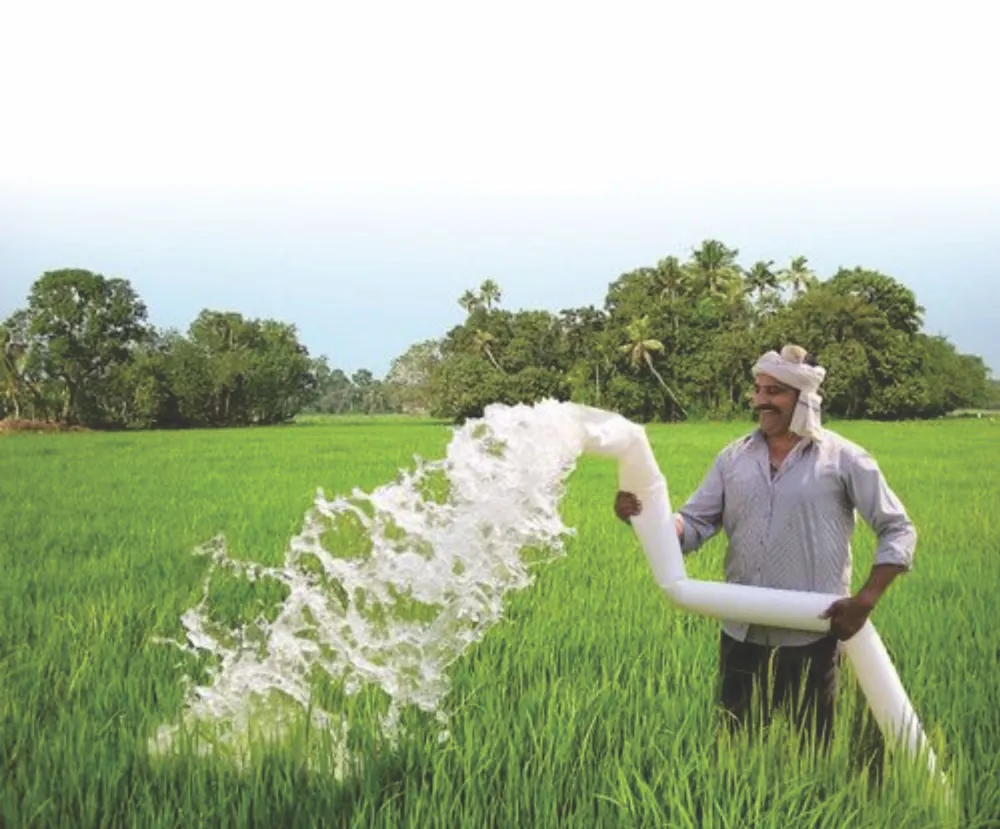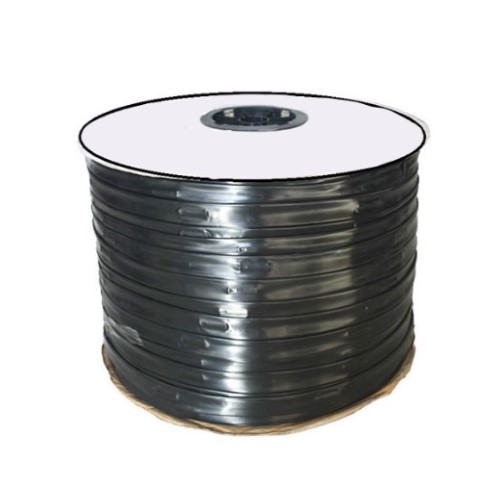Introduction:

Welcome to our blog, where we will dig into the realm of agricultural irrigation and shine light on the numerous advantages and applications of flat inline drip pipes. Because of its effectiveness, ease of installation, and exact water distribution, this unique irrigation system has acquired enormous appeal in recent years. This article will provide you a thorough review of flat inline drip pipes, including their specs, benefits, and prospective applications. So, let’s get started!
What is Flat Inline Drip Pipe?
Flat inline drip pipe is a type of irrigation system that consists of a flat, flexible plastic tube with integrated drip emitters spaced evenly along its length. These emitters allow water to be directly applied to the plant’s root zone, minimizing evaporation and ensuring efficient water distribution. The pipe can be customized to meet specific crop requirements and is suitable for a variety of agricultural applications.

Specifications :
- Material: Flat inline drip pipes are commonly made from high-quality, UV-stabilized polyethylene (PE) or polyvinyl chloride (PVC) materials, ensuring durability and longevity.
- Emitter Spacing: The emitters are typically spaced at regular intervals, such as 15 cm, 20 cm, or 30 cm, allowing for precise water application and tailored irrigation.
- Emitter Flow Rate: The flow rate of the emitters can range from 1 to 4 liters per hour (LPH), depending on the crop’s water requirements and soil conditions.
- Pipe Diameter: Flat inline drip pipes are available in various diameters, ranging from 12 mm to 20 mm, allowing for flexibility in installation and water delivery capacity.
- Coil Length: The pipe is usually supplied in coils, with standard lengths varying from 100 meters to 500 meters. Custom lengths can also be requested.
Advantages of Flat Inline Drip Pipe :
- Water Efficiency: The drip emitters directly deliver water to the plant’s root zone, minimizing water wastage through evaporation and reducing water consumption by up to 50% compared to traditional irrigation methods.
- Precise Irrigation: The even spacing of emitters ensures uniform water distribution across the field, preventing overwatering or underwatering of plants.
- Weed Control: Since water is delivered directly to the plants, the surrounding soil remains dry, inhibiting weed growth and reducing the need for herbicides.
- Nutrient Management: Flat inline drip pipes can be used for fertigation, the process of delivering fertilizers through the irrigation system. This allows for precise nutrient application, resulting in improved crop health and reduced fertilizer runoff.
- Versatility: Flat inline drip pipes are suitable for various crops, including row crops, vineyards, orchards, greenhouses, and gardens.
- Reduced Labor and Maintenance: Once installed, flat inline drip pipes require minimal maintenance and eliminate the need for hand-watering or manual irrigation systems, saving time and labor.
Potential Applications:
- Field Crops: Flat inline drip pipes are widely used for irrigating field crops such as corn, soybeans, cotton, and vegetables, providing targeted watering and nutrient delivery.
- Orchard and Vineyard Irrigation: The precise water application of flat inline drip pipes is particularly beneficial for fruit trees and grapevines, enhancing yield and quality.
- Greenhouse Cultivation: Flat inline drip pipes are suitable for greenhouse irrigation, allowing for controlled watering and customized nutrient application in a controlled environment.
- Landscape and Garden Irrigation: These pipes can be used in residential or commercial landscapes and gardens, ensuring efficient water usage and maintaining healthy plant growth.
CONCLUSION
Flat inline drip pipes offer a range of benefits, including water efficiency, precise irrigation, and versatility across various agricultural applications. By optimizing water usage. Source www.siddhiagritech.in

